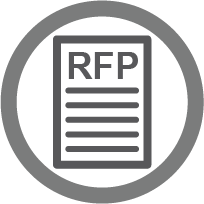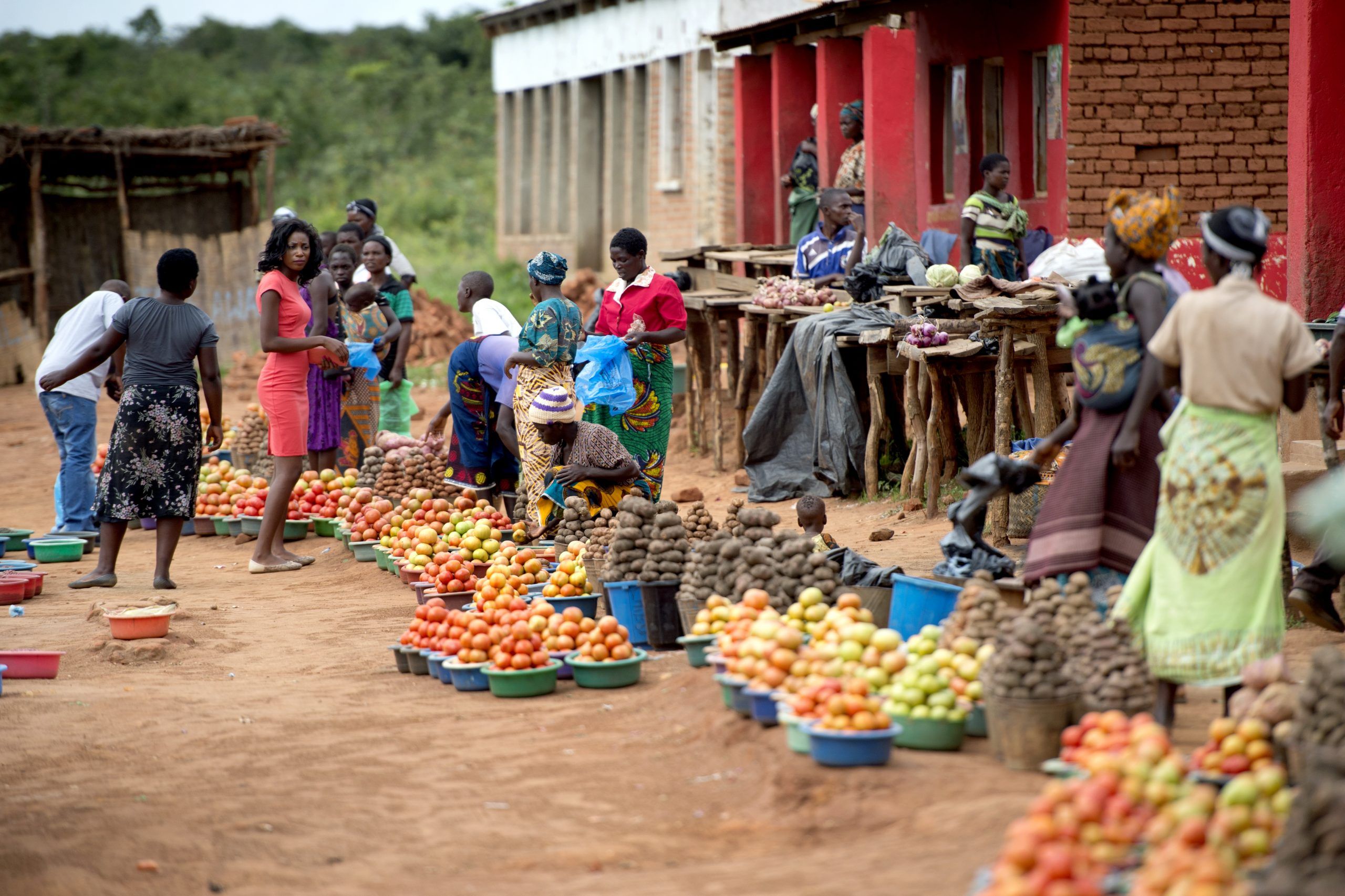1. Purchase Request with Technical Specifications

Identify the works to be procured from the Procurement Plan and draft the technical specifications.
Procurement starts with the completion and authorization of the Purchase Request Form GEN 1-1. The Purchase Request originates outside the Procurement Department and the specifications shall be drafted by an engineer, architect or other specialist in collaboration with the project manager.
The Purchase Request identifies the technical specifications of the works, ensures sufficient budget and requests the procurement responsible staff to procure the works.
Determine if it is necessary or relevant to divide the works into several sublots to promote competition or to support the project market economy (e.g. depending on the capacity of the construction companies available in the market) or to avoid delays. Please refer to section 4.1.1.
Clear, well-defined technical specifications are a prerequisite for receiving proposals matching the requirements and the budget. When drafting the technical specifications, please refer to section 4.12.1.
NOTE: If a candidate assists with input to the technical specifications, the candidate is excluded from participating in that procedure.
GEN 1-1: Purchase Request Form 


WOR 1: Request for Proposal 

2. Prepare Shortlist

Prepare a shortlist with a minimum of three candidates applying GEN 13. It is recommended to include 4-8 candidates to ensure that a minimum of three proposals are collected. For more information on sourcing candidates see section 4.11.2. Before shortlisting the candidates, the following shall be evaluated:
• The candidate’s previous experience with similar Works
• The candidate’s references
• Implementation capacity of the candidate
• Experience of the staff
• The candidate’s access to plant and equipment
At this stage it is also recommended to collect general information on sector and country specific ethical risks to identify potential risks related to procuring the Works in question. Include the information in the sourcing decisions and further in drafting the RFP. See section 1.2.1 for implementation of the ethical procurement principles.
GEN 13: Shortlist of Suppliers/Candidates and Receipt Form 


3. Draft Request for Proposal

Carefully prepare the RFP applying the template in WOR 1 and approach the candidates for a proposal. The RFP shall be forwarded simultaneously (same day) to all the shortlisted candidates. This is to ensure that all candidates are given an equal amount of time to prepare and submit their proposal. It is recommended to provide candidates with a minimum of two weeks to submit a proposal.
When preparing the RFP consider all the articles and options and decide on:
High-Risk Contract
Is the Contract of low or high risk in terms of delays, insurance uncertainty, deficient quality, uncertainty on permits or authorisation, lack of capacity to administrate contract and whether the construction company is a small company, operating in the project country only, or a large international company. The higher the value and risk involved, the more important it is to include clauses ensuring the execution of the works and protecting the interest of the Contracting Authority. For information on legal aspects, see section 8.3. It is important to be aware that too strict requirements may discourage small companies from lodging a proposal.
Evaluation Criteria
Article A.15 of the RFP informs the candidates of the technical and financial criteria, which the Procurement Committee will use for the evaluation of the proposals. Furthermore, it informs the candidates of the weights assigned to the technical and financial scores. Finally, the article details how the Procurement Committee will weigh the various technical criteria.
Article A.15 suggest a set of predefined technical evaluation criteria with preassigned weights. These can be changed by the Procurement Committee to match the specific needs of the Works Contract in question. The technical score is a sum of the points each candidate has obtained for each technical criterion.
The financial evaluation criteria are predefined in article A.15 as the formula Sf = 100 x Fm/F (Sf is the financial scores of a proposal; Fm is the lowest price; and F is the price of the proposal under evaluation). This formula cannot be changed. Under the evaluation in Step 4, the Procurement Committee uses this formula to calculate a financial score for each proposal received.
The overall score is calculated per proposal using the following pre-defined formula: (St X 40%) + (Sf X 60%) = overall score (St being the technical proposal and Sf the financial proposal).
The assigned weights of 40% and 60% are flexible and the Procurement Committee shall adapt the weight to the specific needs with respect to the budget available (weight of financial proposal) and the technical and quality requirements (weight of the technical proposal) for the Works Contract. Please take note that assigning a high weight to the financial proposal will indicate that price is the most important factor of the two, and the overall score will favour the cheapest price. Is the highest weight assigned to the technical proposal, the emphasis will be on the quality and the technical requirements and the overall score will favour the best technical offer. This will require a robust budget as there tends to be a link between quality and price.
Please note that the overall score links directly to the Award Criteria in WOR1 A.16
Ethical Criteria
It is recommended to obtain general information on sector and country specific ethical risks to identify potential risks related to procuring the works in question. Is there a need to include specific criteria to ethical procurement issues in the RFP such as certifications (or equivalent proof of compliance to ethical criteria) or the inclusion of specific terms related to e.g. environmental or social performance? Note that noncompliance to employees’ health and safety are often high-risk areas for Works Contracts and should be addressed specifically in an article in the RFP.
Donor Requirements
Take note of specific donor requirements such as requirements to nationality, exclusivity clauses, publication rights, visibility, right to audit, exclusion and eligibility clauses, preference criteria, etc., which might require amendment of the RFP.
Bank Guarantees
Will a prepayment-, tender- or a performance guarantee be required? For more information on bank guarantees, see section 9.3.
Subcontracting
Decide if subcontracting is to be allowed and be aware that subcontracting may induce a high risk in some contexts.
Follow Up
To ensure that enough offers are received on time it is recommended to contact all shortlisted candidates 1-2 days after submitting the RFP to ask if they intend to submit a proposal. When a short deadline is required, it is a good practice to follow up to explain the importance of completing the Submission Form and submitting the offer prior to the deadline.
WOR 1: Request for Proposal 

4. Register Proposals and Initiate Evaluation

Upon receipt of the quotations the date and time of receipt are registered in GEN 13 and the Procurement Committee initiate the evaluation, utilising the Evaluation Grid in WOR 3. Make sure all the evaluation criteria defined in the RFP are applied to the Evaluation Grid before evaluation starts.
Proposals shall be ranked according to their combined technical and financial scores using the weighting of the technical proposal and the financial proposal predefined in the RFP send to the candidates.
Please note that candidates who have not submitted their quotation before the deadline shall not be considered.
Evaluation Challenges
• In case all candidates have offered prices which are too high and/or the technical specifications need to be changed or adjusted, it is not necessary to issue a new RFP. Instead the candidates can be contacted in writing with the amendments and new deadline and request a revised quotation.
• If less than three proposals have been received and if some candidates have declined to submit a proposal, the Contracting Authority can proceed with the best offer provided that the general procurement principles are met. E.g. it shall be ensured that enough candidates were shortlisted, that all candidates have been given enough time to submit a proposal, and that all candidates have acknowledged the receipt of the RFP. If it is not possible to find a minimum of three qualified candidates in the market, it is important to survey broader e.g. markets in neighbouring districts and countries. See section 4.11.2 for how to source new candidates. Lack of candidates in the local market is not sufficient grounds for proceeding with less than three proposals.
WOR 3: Evaluation Grid and Report 
GEN 13: Shortlist of Suppliers/Candidates and Receipt Form 


5. Interview and Negotiation

Interview
The candidates who are administratively compliant having passed the questions in Part A of the Evaluation Grid, can be invited for an interview. This is not a requirement, but it is recommended. After the interviews the Procurement Committee has the possibility to change the scores in the Evaluation Grid. There is a separate column in the Evaluation Grid for this purpose.
An interview can also facilitate a discussion on identified ethical risks in order to find possible solutions or determine if the proposal shall be turned down for ethical reasons.
Negotiation
The Procurement Committee has the option to negotiate the terms of the contract, and it is recommended to do so. There are no specific procedures on negotiations except that the general procurement principles shall always be respected, and negotiations shall not entail any substantial deviation from the terms and conditions of the RFP. The main purpose of negotiation is to obtain better conditions in terms of technical quality, implementation period, price, payment conditions, etc.
Negotiations may have the purpose of reducing the scope of the services or revising other terms of the contract in order to reduce the proposed remuneration. This may be necessary when the prices proposed exceed the limits of the funds available to the Contracting Authority. In this case, all candidates involved should be invited to participate in the negotiations and to potentially submit a new proposal.
The negotiations can be done by email, phone or at a meeting. A written recap shall be prepared, filed, copied and submitted to the candidate.
When negotiating the terms, consider how requirements on e.g. delivery times and price may affect the candidates’ ability to comply with the ethical principles and standards.
WOR 3: Evaluation Grid for Negotiated Procedure 
6. Select Candidate and Issue Contract

Finalize evaluation and select the best and most compliant candidate whose proposal has been determined to be substantially responsive to the requirements of the RFP and has obtained the highest overall score. This provided further that the candidate has also been determined to fulfil the eligibility and non-exclusion criteria including the eligibility as per DCA Counter Terrorism Policy, by checking the UN Security Council, EU and donor required sanctions lists.
After selecting the winning candidate, the Procurement Committee issues the contract applying WOR 2. Check if the standard contract must be adapted to national legislation, traditions or requirements to Works Contracts.
Works Contracts are complex and the higher the value and risks involved, the more important it becomes to include clauses ensuring the execution of the works and protecting the interest of the Contracting Authority. It is important to be aware that too strict requirements may discourage smaller companies from entering into a contract.
The standard contract in WOR 2 includes the GTC and the COC which shall never be amended. If amendments to the GTC is needed, instructions must be included in the Contract itself. All agreements reached with the selected candidate shall be incorporated into the contract e.g. amount of global price and bank account references. Please consider carefully the legal issues specified in section 8.3.
Note that the RFP (WOR 1) and contract (WOR 2) templates are designed for ‘global price’ contracts only, which is a total price for the entire assignment. Global price contracts are generally used for works that can be defined in their full physical and qualitative characteristics before proposals are called for, or where the risks of substantial design variations are minimal. This is usually construction of buildings, pipe laying, power transmission towers, and series of small structures, such as shelters, latrines and ablution units, which are the most commonly constructed buildings under projects.
The contract shall be forwarded unsigned to the selected candidate and returned signed to the Contracting Authority. Only thereafter shall the contract be signed by the Contracting Authority. Signing the contract creates a legally binding document for both parties.
Before signing the contract the Procurement Committee shall ensure:
• That adequate and exact reference is made in the contract to the relevant RFP
• That the contractor acknowledges the GTC and the COC without exceptions or amendments
• For new contractors, make sure that satisfactory references and company data has been obtained
NOTE: If the selected candidate cannot accept the GTC, the Procurement Committee shall decline the proposal and continue the process with another candidate.

WOR 3: Evaluation Grid for Negotiated Procedure 
WOR 2: Contract 
7. Send Letter to Unsuccessful Candidates

Once the selected contractor has returned the contract duly signed, a letter shall be sent to the unsuccessful candidates (WOR 4) informing them of the result of the procedure i.e. the name of the successful contractor and the total contract amount and the scores as per the Evaluation Grid.
WOR 4: Letter to Unsuccessful Candidates 
8. Publish Award Notice

For contracts above EUR 30.000 it is mandatory to publish an Award Notice applying GEN 17. The Award Notice shall be published in a suitable media where candidates will notice the information and on the Contracting Authority’s website. The purpose of a public announcement is to meet the principle of transparency with the added benefit of attracting new candidates. Thus, the Award Notice is useful and recommended for
all contracts.
For situations where the Procurement Committee finds that posting an Award Notice will bring project staff, beneficiaries, the project or the winning contractor at risk, the Procurement Committee may refrain from posting an Award Notice, see blanket derogation (k). This shall be duly documented.
NOTE: The Procurement Committee shall take notice of any specific donor requirements for publishing an Award Notice
GEN 17: Award Notice (optional below EUR 30,000) 

9. Receive and Inspect

The Contracting Authority shall follow up on the timely delivery and satisfactory quality of the received works and take remedial measures to mitigate any negative consequences, caused by late delivery and/or shortfall in the agreed quantity and quality.
The administration of a Works Contract and the inspection of the works require an expertise in this area. For example, the” measurement” of the works in article 39 of the GTC and the determination whether the works can be determined as ”completed” in article 45 of the GTC, cannot be undertaken by someone other than a qualified engineer or a project manager having the adequate qualifications.
A qualified engineer should not have difficulties in identifying the standard contractual clauses and in taking all necessary dispositions e.g. issuance of instructions, notices, certificates to ensure proper execution of the works. After inspection and approval of the works, a Certificate of Final Completion shall be signed and filed in the procurement file.
DOCUMENTATION IN THE PROCUREMENT FILE
• Declaration of Impartiality and Confidentiality
• Purchase Request
• Shortlist of Suppliers/Candidates and Receipt Form
• Request for Proposal
• Proposals Received
• Evaluation grid for Negotiated Procedure
• Contract
• Letter to Unsuccessful Candidates
• Copy of invoice
• Award Notice (optional below EUR 30.000)
• Certificate of Final Completion
• Note to File, if relevant

